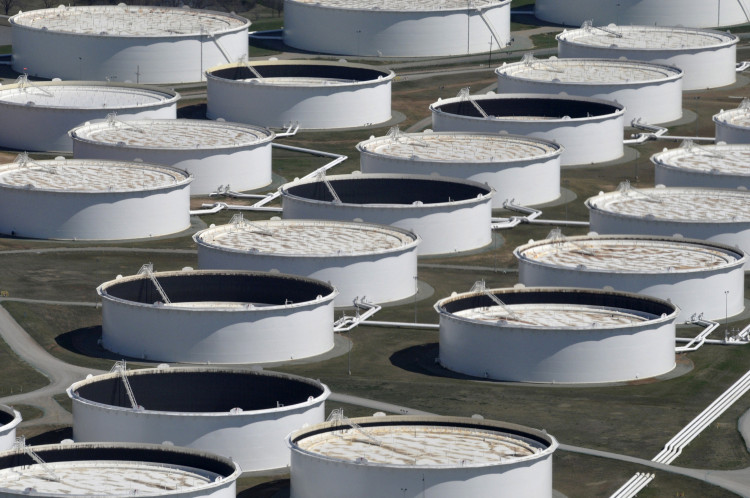U.S. crude oil prices fell sharply on Wednesday, dropping more than 7% during intraday trading before paring losses, as markets reacted to China's announcement of retaliatory tariffs on U.S. goods in response to President Donald Trump's sweeping 104% levies. The aggressive trade action deepened concerns of a global economic slowdown and sent oil benchmarks tumbling to their lowest levels in four years.
West Texas Intermediate (WTI) crude futures were down $1.83, or 3.07%, at $57.75 a barrel by mid-morning, after plunging to an intraday low of $55.12. Brent crude, the international benchmark, fell $1.93, or 3.07%, to $60.89, after hitting a session low of $58.40.
Beijing's finance ministry said the new 84% tariffs on U.S. imports will take effect Thursday, intensifying fears of a prolonged economic conflict between the world's two largest economies. President Trump's latest tariff escalation took effect early Wednesday, following Beijing's refusal to lift prior retaliatory duties.
"The escalating trade war between China and the U.S. is stoking fears of a global recession," said Giovanni Staunovo, analyst at UBS. "While oil demand has likely not suffered yet, rising concerns of weaker oil demand over the coming months require lower prices to trigger supply adjustments."
The sell-off in oil markets comes amid additional supply-side pressure. OPEC+ announced plans last week to increase output by 411,000 barrels per day in May, a move analysts say could push the market into surplus.
Analysts say the combination of mounting recession concerns and increased oil supply is creating a volatile environment that could further pressure crude prices.
Oil prices have now fallen for five consecutive sessions since the White House first announced the 104% reciprocal tariffs, with WTI down nearly 10% over that span. Some analysts suggest the Trump administration may be aiming to depress oil prices as a geopolitical tool.
"Some U.S. analysts suggested that the White House wants to drive oil prices closer to $50," said Ashley Kelty, analyst at Panmure Liberum. "We see this goal as somewhat delusional ... and it will merely see U.S. production shut in and open the door for OPEC to reclaim its position as the swing producer."
China's oil demand growth of 50,000 to 100,000 barrels per day is now at risk if the trade standoff continues, said Ye Lin, vice president at Rystad Energy. However, Lin noted that "stronger stimulus to boost domestic consumption could mitigate the losses."
Goldman Sachs on Wednesday revised its forecasts downward, projecting Brent crude to end 2025 at $62 per barrel and WTI at $58. For 2026, those figures drop to $55 and $51, respectively.
In a rare positive data point, the American Petroleum Institute reported a drawdown of 1.1 million barrels in U.S. crude inventories for the week ending April 4, compared with expectations for a 1.4 million-barrel build. The Energy Information Administration is expected to release official inventory data later Wednesday.






